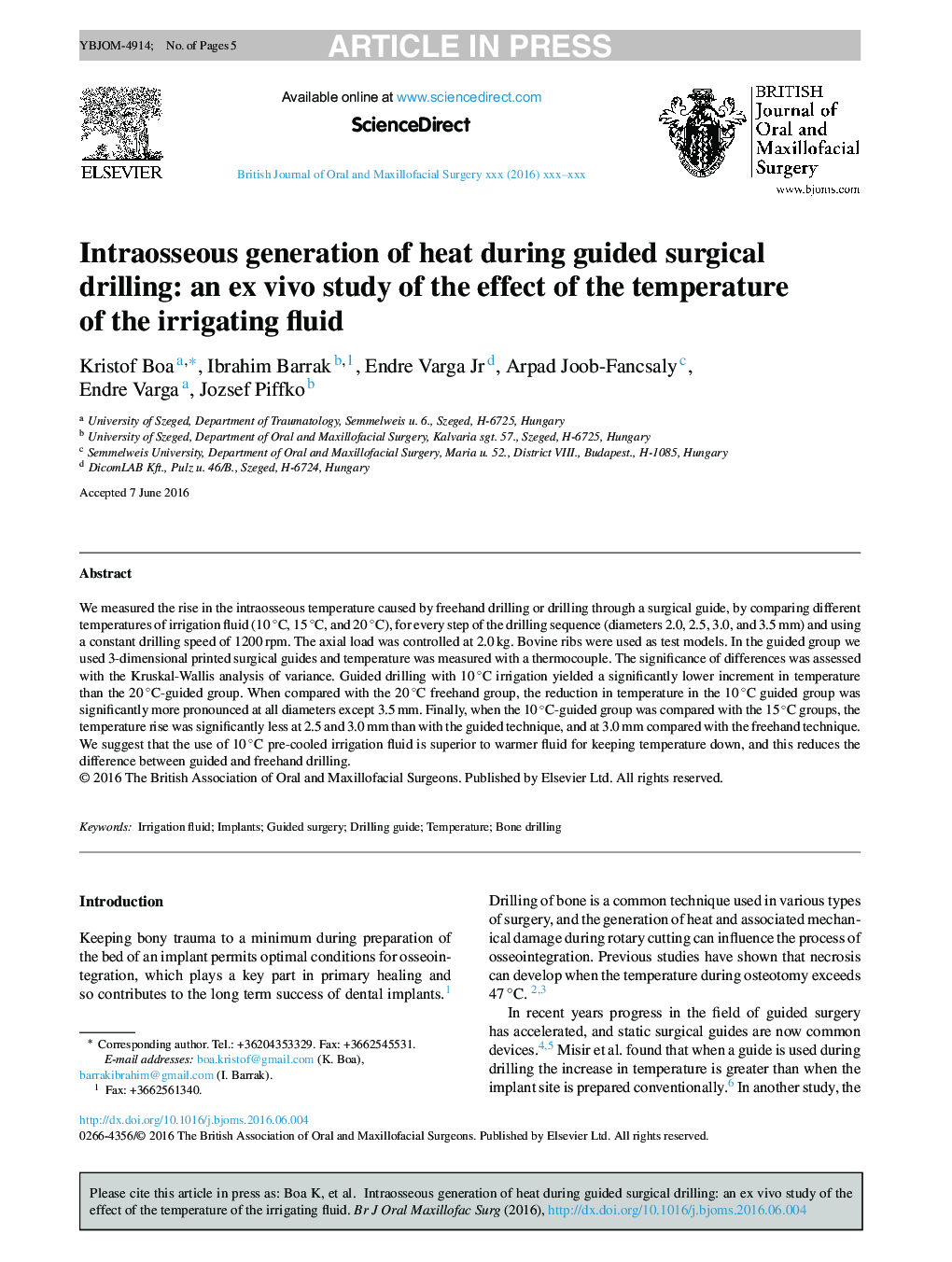| Article ID | Journal | Published Year | Pages | File Type |
|---|---|---|---|---|
| 5638665 | British Journal of Oral and Maxillofacial Surgery | 2016 | 5 Pages |
Abstract
We measured the rise in the intraosseous temperature caused by freehand drilling or drilling through a surgical guide, by comparing different temperatures of irrigation fluid (10 °C, 15 °C, and 20 °C), for every step of the drilling sequence (diameters 2.0, 2.5, 3.0, and 3.5 mm) and using a constant drilling speed of 1200 rpm. The axial load was controlled at 2.0 kg. Bovine ribs were used as test models. In the guided group we used 3-dimensional printed surgical guides and temperature was measured with a thermocouple. The significance of differences was assessed with the Kruskal-Wallis analysis of variance. Guided drilling with 10 °C irrigation yielded a significantly lower increment in temperature than the 20 °C-guided group. When compared with the 20 °C freehand group, the reduction in temperature in the 10 °C guided group was significantly more pronounced at all diameters except 3.5 mm. Finally, when the 10 °C-guided group was compared with the 15 °C groups, the temperature rise was significantly less at 2.5 and 3.0 mm than with the guided technique, and at 3.0 mm compared with the freehand technique. We suggest that the use of 10 °C pre-cooled irrigation fluid is superior to warmer fluid for keeping temperature down, and this reduces the difference between guided and freehand drilling.
Related Topics
Health Sciences
Medicine and Dentistry
Dentistry, Oral Surgery and Medicine
Authors
Kristof Boa, Ibrahim Barrak, Endre Jr, Arpad Joob-Fancsaly, Endre Varga, Jozsef Piffko,
